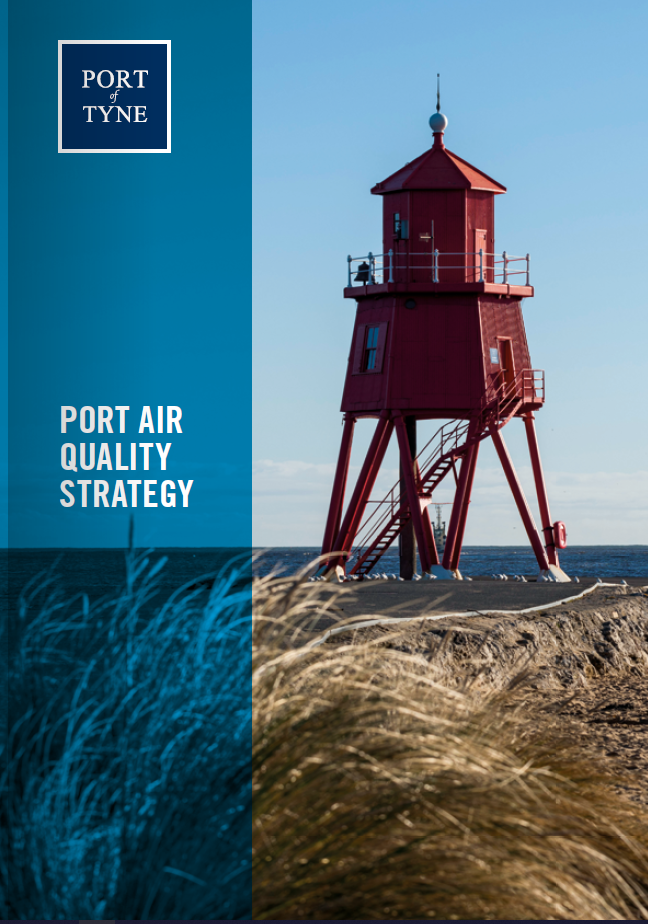Study reveals good air quality around Port of Tyne
20th July 2021

Air quality around the Port of Tyne is “good” and well within the required national standards, an independent inventory of pollutant gas emissions has concluded.
The study, conducted by highly regarded air quality expert Ove Arup and Partners, has also verified that Port-related activity accounts for just 1-2% of total air pollutant concentrations and that levels can be officially classified as ‘minor’ when compared to existing background concentrations of air pollutants.
Tyne 2050 and ongoing green goals
Although emissions released to air as a result of the Port’s activities are already well below statutory requirements, the Port of Tyne will be continuing with its ongoing efforts to further improve air quality within the Tyne estuary. All port operations are on track become fully Net Zero Greenhouse Gas (GHG) by 2030 and the programme to replace gas oil-fired plant equipment with clean energy, electric equivalents, is well underway.
To encourage the early adoption of green shipping technology among its customer base, the Port of Tyne is evaluating the potential of a “Green Ship” Tariff. This would see the cost of using the Port’s facilities decrease for vessels powered by clean energy.
The final transition to ‘All-Electric Port’ is expected by 2040 and this will include the provision of shore-based power sources for visiting vessels. In addition to these goals, the Port is also keen to become a test bed for clean energy technology and further environmental impact automation.
“These results are extremely pleasing and although emissions are already low, we expect them to further decrease as we progress towards the Port’s 2050 goals,” says Steven Clapperton, Maritime Director and Harbour Master at the Port of Tyne.
“As always, our intention is to be completely open and transparent about efforts to improve air quality and to ensure that the highest levels of protection for people living and working in and around port areas are maintained. This assessment clearly demonstrates the Port of Tyne’s commitment to air quality and the considerable progress we have made towards improving quality of life for everyone within the wider Tyne Estuary.”
Scope of the Air Quality Strategy Study
- The facilities used and commercial activities undertaken by the Port of Tyne which were monitored in the study included:
- Vessel movements within the statutory harbour area and at berth
- Non-road mobile machinery (NRMM) including cranes, tugs, wheel loaders etc on the port estate
- Vehicle imports and exports on the Port’s North (VAG) and South (Nissan) estates
- Vehicles using the Port of Tyne internal road network
- Loading and unloading of Roll-on/Roll-off (RoRo) ferries
- Storage and handling of wood pellets
- Rail operations and locomotives for the transporting of wood pellets from the Port of Tyne
- The International Passenger Terminal (IPT)
Air pollutants measured during the study were CO2, SO2, NO2, Non Methane Volatile Organic Compounds (NMVC) and Particulate Matter (PM).
The monitored Port of Tyne statutory harbour area stretches from one mile beyond the piers at Tynemouth, to the tidal limit at Wylam, 17 miles inland to the West.
The study involved an impact assessment utilising complex atmospheric dispersion modelling to predict pollutant concentrations at identified sensitive receptors and their compliance with standards defined within the National Air Quality Regulations.
All ports in the UK with bulk cargo throughput in excess of one million tonnes per annum are required to develop an air quality strategy for their designated statutory areas in line with the Department for Transport’s Port Air Quality Strategy guidance. This requirement involves compiling an inventory of relevant emissions for the baseline year (which the Port of Tyne declared to be 2017) and this includes emissions from port related activities on land as well as emissions from all vessels visiting the Tyne in 2017.
Download a copy of the report here

